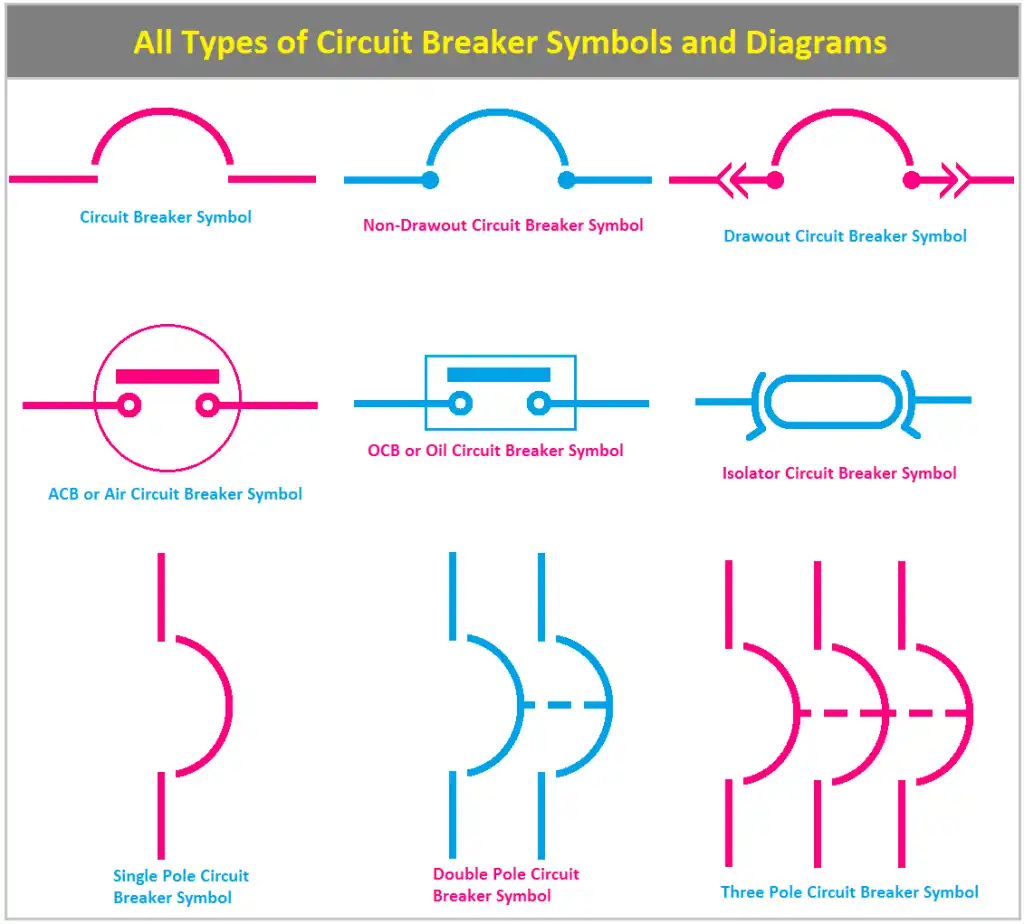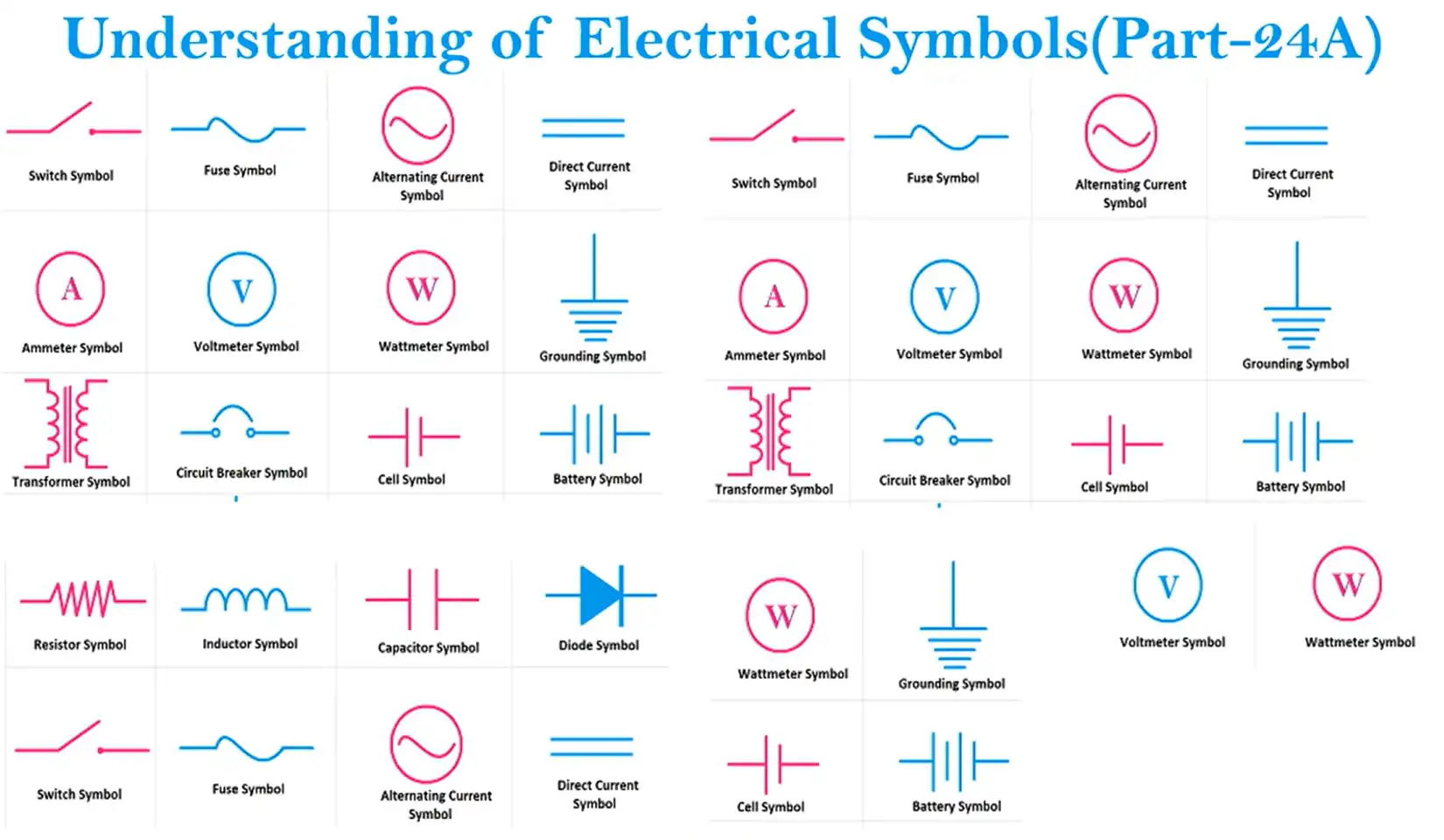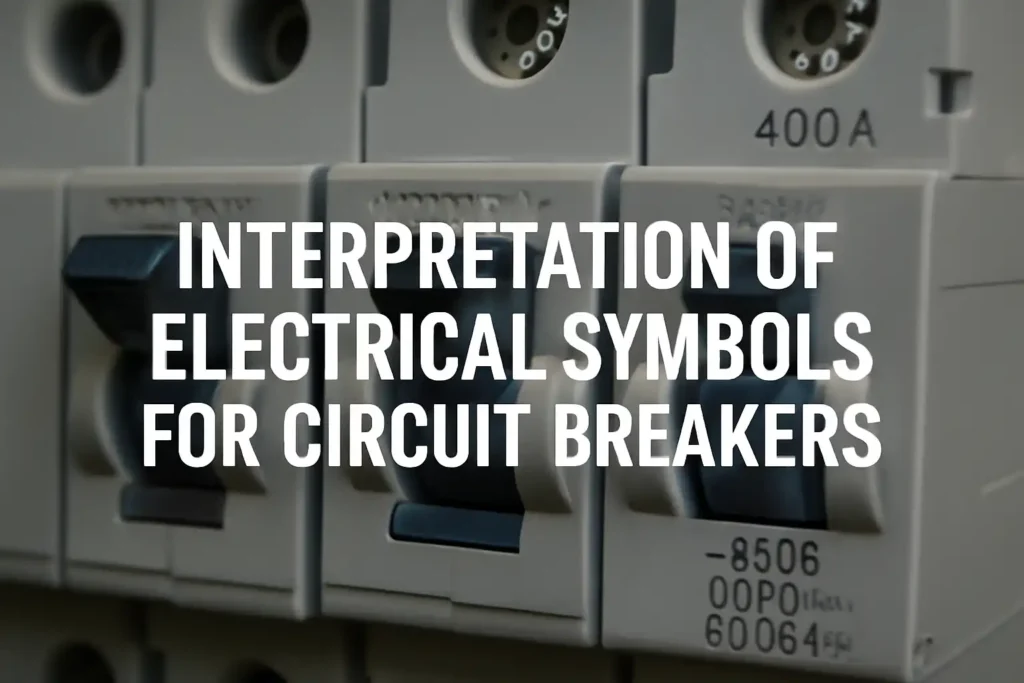Electrical symbols for circuit breakers show these devices in diagrams. These symbols explain how circuit breakers work in a system. They make wiring diagrams easier to read and understand.
These symbols help keep electrical systems safe and efficient. By using them correctly, you can stop overloads and lower risks. They also help ensure power flows smoothly. Whether you are designing or fixing systems, these symbols are important for safety and proper function.
Key Takeaways
-
Electrical symbols make it easier to understand circuit breakers. They help you find parts and know what they do.
-
Using common symbols keeps electrical systems safe and efficient. This helps avoid errors when installing or fixing them.
-
Learning symbols for circuit breakers, like RCDs and overcurrent ones, improves safety at home and work.
-
Updating your knowledge of symbols helps you learn about new tools and safety rules.
-
Clear symbols in diagrams stop accidents and follow safety rules. This makes your work safer and better.
Overview of Electrical Symbols for Circuit Breakers
Definition and Purpose
Electrical symbols for circuit breakers are pictures used in diagrams. These pictures show how circuit breakers work in a system. Each symbol gives details about the type and job of the breaker. For example, a rectangle with a slanted line means a basic circuit breaker.
Think of these symbols as a shared language for electricians. They make it easier to understand and use diagrams. Without them, fixing or designing electrical systems would be much harder.
Importance in Electrical Schematics
Electrical diagrams use symbols to share complex ideas simply. Circuit breaker symbols show where breakers are and how they connect. This helps you plan, set up, or fix electrical systems.
These symbols also make things safer. They help you find key parts fast, lowering mistakes during work. Whether you’re a pro or learning, knowing these symbols makes your work safer and faster.
Evolution and Standardization
Electrical symbols have changed to fit modern systems. Long ago, different places used different symbols, causing confusion. Now, groups like IEC and ANSI make sure symbols are the same everywhere. This helps you use diagrams from any location.
New technology has also changed these symbols. As breakers get smarter, symbols now show more details. For example, some symbols show remote control or problem detection. These updates keep symbols useful as technology grows.
Types of Circuit Breakers and Their Electrical Symbols

Overcurrent Circuit Breakers
Overcurrent circuit breakers stop damage from too much electricity. They shut off power when the current gets too high. In diagrams, their symbol is a rectangle with a diagonal line. This symbol shows where overcurrent protection is in a circuit.
These breakers prevent overheating and fires. They also stop sudden surges, like short circuits. For example, if a wire breaks, the breaker trips to stop harm.
Groups like IEC and ANSI set rules for these breakers. They make sure symbols are clear and the same everywhere. This helps you understand diagrams easily, no matter the location.
Residual Current Devices (RCDs)
Residual Current Devices (RCDs) protect people from electric shocks. They check electricity flow and trip if there’s a leak. Their symbol is a rectangle with a wave or curved line.
RCDs are important in wet places like bathrooms or kitchens. They cut power when they find leaks, lowering shock risks. This makes homes and workplaces safer.
Seeing an RCD symbol means safety is a priority. These devices stop small problems from becoming big accidents. They are key to modern electrical systems.
Motor Circuit Breakers
Motor circuit breakers protect electric motors from damage. They handle overcurrent and short-circuit issues, plus motor-specific needs. Their symbol is a rectangle with an “M” or similar mark.
Motors need extra care because they use high currents to start. These breakers stop overloads or short circuits to keep motors safe. For example, if a motor overheats, the breaker trips to stop power.
Motor breakers are common in factories with many machines. Knowing their symbols helps you design safe and efficient systems.
Practical Applications of Electrical Symbols

Interpreting Electrical Schematics
Knowing symbols makes reading electrical schematics much easier. These diagrams use electrical symbols for circuit breakers to explain systems. For instance, a rectangle with a slanted line shows an overcurrent circuit breaker. Recognizing this helps you find overload protection in the circuit fast.
In factories, workers use these symbols to safely cut power during repairs. This keeps both people and machines safe. In power systems, they help restore service quickly after problems, reducing downtime. Learning these symbols improves safety and speeds up work in many places.
|
Application Context |
Description |
|---|---|
|
Industry Example |
Workers in factories use symbols to safely turn off power during repairs, protecting people and machines. |
|
Practical Impact |
In power systems, breakers restore service fast after faults, cutting downtime for homes and businesses. |
Designing Wiring Diagrams
Electrical symbols are key when creating wiring diagrams. They let you plan circuits clearly and correctly. For example, using the right symbol for a residual current device (RCD) ensures shock protection is included. This is vital in places like kitchens or bathrooms where water raises accident risks.
A home contractor once used clear symbols for circuit breakers in a renovation. This made sure all work followed safety rules without confusion. Using standard symbols helps you share your design with electricians and inspectors, avoiding errors and saving money.
Maintenance and Troubleshooting
Symbols make fixing and maintaining circuits simpler. If a circuit fails, symbols show where the issue is. For example, if a motor circuit breaker trips, its symbol on the diagram helps you find it fast. This saves time and prevents more damage.
In factories, standard symbols are very helpful. A plant needed many residual current circuit breakers (RCCBs). Clear symbols helped the team order the right products quickly. This avoided delays and kept the project on track. Whether fixing a home system or running a big project, symbols are crucial for quick repairs.
Tip: Always keep your schematics updated with clear symbols. This saves time and keeps everyone safe during repairs.
Security Features in Circuit Breaker Systems
Protective Devices and Their Symbols
Protective devices keep circuits safe and working well. These include overcurrent relays, surge protectors, and residual current devices. Each device has its own symbol to show its job. For example, a surge protector symbol looks like a zigzag line. This shows it can handle sudden voltage spikes.
These symbols make it easier to understand circuit diagrams. They help you find important parts quickly. This lowers mistakes during setup or repairs. Protective devices keep circuits safe from problems. They stop damage to equipment and reduce dangers.
Compliance with Safety Standards
Circuit breakers must follow strict safety rules to work well. One rule is UL 489I, made for solid-state circuit breakers. This rule checks if breakers are safe and high-quality. It also tests them under tough conditions, like faults or bad weather.
|
Aspect |
Description |
|---|---|
|
Certification Standard |
UL 489I |
|
Focus |
Solid-state circuit breakers |
|
Key Requirements |
Safety and quality standards, functional safety risk assessment |
|
Testing Conditions |
Normal and abnormal conditions, environmental conditioning, fault evaluation |
|
Safety Functionality |
Must stay safe or turn off power during faults |
Following these rules makes circuit breakers safer and more reliable. This keeps electrical systems working safely, even in hard situations.
Innovations in Circuit Breaker Technology
New technology has made circuit breakers better and smarter. Smart grids now allow real-time monitoring and faster fixes. Microgrids adjust to changing energy sources, keeping systems running. AI and machine learning predict and find problems more accurately.
|
Innovation Type |
Description |
|---|---|
|
Smart Grid Integration |
Real-time monitoring and faster fixes for problems. |
|
Microgrid Protection |
Adjusts to changing energy sources to keep systems running. |
|
AI and Machine Learning |
Predicts and finds problems better, improving system safety. |
These updates make circuit breakers more reliable and efficient. They help protect homes and businesses from risks, keeping everyone safer.
Knowing electrical symbols for circuit breakers is very important. These symbols help you read diagrams and keep circuits safe. Learning them makes your work faster and lowers risks in projects.
Circuit breaker symbols also help follow safety rules. They show how to build systems that protect people and devices. Keeping up with new circuit technology helps you handle modern problems better.
Tip: Check updated rules and symbols often. This keeps your knowledge current and your circuits safe.
FAQ
What does a residual current device do in electrical systems?
A residual current device stops electric shocks from happening. It finds leaks in electricity and quickly shuts off power. This keeps places like kitchens and bathrooms safer, especially near water.
How can you spot a residual current device in a diagram?
Look for a rectangle with a wavy or curved line. This symbol shows where the device is and its job to stop hazards.
Why are residual current devices needed in today’s homes?
These devices make homes safer by stopping shocks and fires. They are very useful in wet areas where accidents are more likely.
Can a residual current device stop every electrical accident?
It lowers risks but can’t stop all accidents. It works best with good wiring and regular checks. Always follow safety rules for the best protection.
How often should you check a residual current device?
Test it every three months by pressing the test button. This makes sure it works right and keeps your system safe.
The following information may be of interest to you
Customizable Residual Current Circuit Breaker
How to choose a residual current circuit breaker manufacturer
What You Need to Know About Surge Protection Device Lifespan



